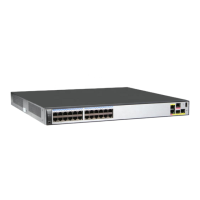9 Upgrade and Maintenance
About This Chapter
Upgrade and maintenance of the router can optimize device performance, monitor device
operation status, simplify operation and maintenance, and reduce carriers' Operation
Expenditure (OPEX).
9.1 Upgrade and Maintenance Overview
Devices can be upgraded and maintained by activating GTL license files, upgrading system
software, managing patches, monitoring CPU and memory usage, or restarting devices.
9.2 Activating a GTL License File
A GTL license file is an authorization file that controls the capacity and functions of a device.
9.3 Upgrading System Software
Software upgrade can optimize device performance, add new features, and update the current
software version.
9.4 Managing Patches
This section describes several operations that can be performed on patches. You can install
patches to upgrade the system without interrupting services, specify the patch file to be used
after the next startup, uninstall patches to deactivate the patches that do not meet system
requirements, or delete the unwanted patches to release the memory of the patch area on the
MPU.
9.5 Monitoring CPU and Memory Usage
Configuring CPU and memory usage thresholds allows CPU and memory usage to be monitored
and system performance to be known in time.
9.6 Restarting the Device
After the system software of the router is upgraded, the router must be restarted to make the
configuration take effect. To prevent the system from breaking down due to a large number of
temporary files, the router also must be restarted.
9.7 Configuration Examples
This section provides configuration examples for upgrade and maintenance, including
networking requirements, precautions, and configuration roadmap. The configuration flowchart
will help you understand the configuration procedures.
Huawei AR2200 Series Enterprise Routers
Configuration Guide - Basic Configuration 9 Upgrade and Maintenance
Issue 02 (2011-10-15) Huawei Proprietary and Confidential
Copyright © Huawei Technologies Co., Ltd.
174

